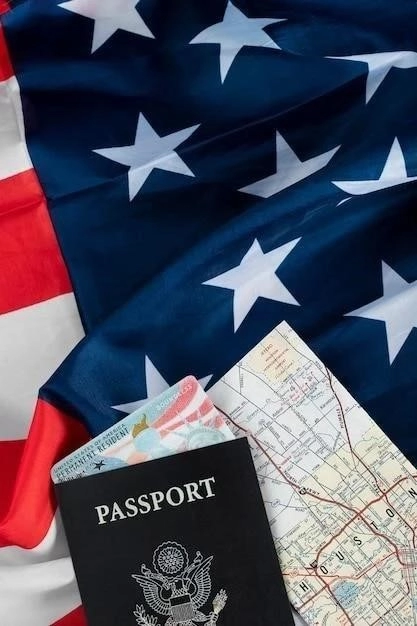Early Immigration: Foundations and Transformations
The nascent history of the United States is inextricably intertwined with immigration. From the arrival of European colonists in the 17th century, seeking new opportunities and fleeing religious persecution, the foundation of the nation was built upon waves of immigration. This period witnessed the arrival of primarily English, French, German, and Dutch settlers, who established communities and shaped the cultural landscape of the burgeoning nation.

The Great Waves: Influx and Impact (1850-1924)
The mid-19th to early 20th century witnessed a dramatic surge in immigration to the United States, often referred to as the “Great Waves.” This period, spanning from 1850 to 1924, saw over 25 million immigrants arriving on American shores, profoundly transforming the nation’s demographic, social, and economic landscape. Unlike earlier waves predominantly from Northern and Western Europe, these new arrivals hailed primarily from Southern and Eastern Europe, including Italy, Russia, Poland, and Austria-Hungary. Additionally, significant numbers arrived from Asia, particularly China and Japan.
Several factors propelled this massive influx. Economic hardship, political instability, and religious persecution in their homelands compelled many to seek a new life in America, perceived as a land of opportunity and freedom. The burgeoning industrial revolution in the U.S. created a high demand for labor, attracting millions seeking employment in factories, mines, and burgeoning urban centers. This era also witnessed the rise of steamship travel, making transatlantic journeys less expensive and more accessible to the masses.
The impact of the Great Waves was profound and multifaceted. The arrival of millions of immigrants fueled industrial growth, urbanization, and westward expansion. Newcomers brought with them diverse cultures, languages, and traditions, enriching the nation’s cultural tapestry while simultaneously sparking social tensions. The influx also led to overcrowded cities, labor strife, and the rise of nativist sentiments, culminating in restrictive immigration legislation, such as the Chinese Exclusion Act of 1882 and the Immigration Act of 1924, aimed at limiting immigration from specific countries and regions. The legacy of the Great Waves continues to shape the demographic and cultural fabric of the United States today.

Immigration Legislation: Shaping the Flow
Throughout its history, the United States has grappled with the complexities of immigration, enacting a series of legislative measures to regulate the flow of newcomers. These laws have reflected shifting societal attitudes, economic considerations, and national security concerns, profoundly shaping the nation’s demographic composition and cultural landscape. From early open-door policies to subsequent restrictions and quotas, immigration legislation stands as a testament to the evolving relationship between the United States and the world.
The late 19th century witnessed a turning point with the rise of nativist sentiments and the passage of restrictive legislation. The Chinese Exclusion Act of 1882 marked the beginning of an era of exclusionary policies, barring Chinese laborers from entering the country and denying citizenship to those already residing in the U.S. The Immigration Act of 1924, also known as the Johnson-Reed Act, further limited immigration by establishing national origin quotas, favoring immigrants from Northern and Western Europe while severely restricting immigration from Southern and Eastern Europe and virtually excluding Asians entirely. These laws aimed to preserve the perceived cultural and racial homogeneity of the nation.
The mid-20th century ushered in a period of reform with the passage of the Immigration and Nationality Act of 1965. This landmark legislation abolished the discriminatory national origin quotas, replacing them with a system prioritizing family reunification and skilled workers. The 1965 Act led to a significant shift in immigration patterns, with a surge in newcomers from Asia, Latin America, and the Caribbean, transforming the nation’s demographic makeup.

Economic Influences: Opportunities and Challenges
The intricate relationship between immigration and the American economy has been a subject of ongoing debate and analysis. Throughout its history, the United States has attracted immigrants seeking economic opportunities, and their arrival has profoundly shaped the nation’s labor force, industries, and overall economic landscape. While immigration presents undeniable economic benefits, it also poses challenges that necessitate careful consideration and policy interventions.
One of the most significant economic contributions of immigrants lies in their role in filling labor market gaps. Immigrants often take on jobs in sectors experiencing labor shortages, such as agriculture, construction, and healthcare. Their willingness to engage in physically demanding or low-wage jobs helps sustain crucial industries and contributes to economic growth. Moreover, immigrants display a remarkable entrepreneurial spirit, often starting small businesses that create jobs, stimulate innovation, and revitalize local communities.
However, the economic impact of immigration is not without its challenges. A surge in immigration can strain public resources, particularly in education, healthcare, and social services. Competition for jobs and housing can lead to wage stagnation and affordability issues, primarily affecting low-skilled native-born workers. It is essential to acknowledge that the economic impact of immigration varies significantly depending on factors such as immigrants’ skill levels, education, and the specific economic conditions of the receiving communities.
Social and Cultural Impacts: Diversity and Assimilation
Immigration has been the lifeblood of American society, infusing it with a rich tapestry of cultures, languages, and traditions. The arrival of diverse groups has profoundly shaped the nation’s social fabric, fostering a vibrant multicultural mosaic while simultaneously sparking debates about assimilation and national identity.
One of the most evident impacts of immigration is the diversification of American culture. Immigrants bring with them unique customs, languages, cuisines, and art forms, enriching the nation’s cultural landscape. This fusion of traditions has given rise to new forms of artistic expression, culinary delights, and cultural celebrations, making the United States a vibrant hub of global influences. The presence of diverse communities fosters cross-cultural understanding, breaks down stereotypes, and promotes tolerance and inclusivity.
However, the process of integrating newcomers into American society has not always been seamless. Assimilation, the process by which immigrants adapt to the dominant culture, has been a subject of ongoing discourse. While some argue for rapid assimilation to foster national unity, others advocate for cultural pluralism, allowing immigrants to retain their cultural identities while embracing American values. The challenge lies in finding a balance that respects cultural diversity while fostering a sense of belonging and shared national identity.

Ellis Island and Angel Island: Gateways to a New Life
For millions of immigrants seeking refuge and opportunity in the United States, the journey culminated at two iconic immigration stations: Ellis Island in New York Harbor and Angel Island in San Francisco Bay. These gateways witnessed the hopes, anxieties, and triumphs of countless newcomers as they embarked on a new chapter in their lives, leaving an enduring legacy on the nation’s history.
From 1892 to 1954, Ellis Island served as the primary entry point for European immigrants, processing over 12 million individuals. The island’s iconic main building, with its towering arches and copper-clad dome, became a symbol of both the promise and challenges of immigration. Upon arrival, immigrants underwent medical and legal inspections, often facing grueling interrogations and agonizing separations from loved ones deemed unfit to enter. Despite the hardships, most immigrants successfully navigated the process, stepping onto American soil with a mix of trepidation and hope.
On the West Coast, Angel Island served as the primary entry point for immigrants from Asia, primarily China, Japan, and India, between 1910 and 1940. Unlike Ellis Island, Angel Island became notorious for its harsh and discriminatory treatment of Asian immigrants, who often faced lengthy detentions, grueling interrogations, and substandard living conditions. The Chinese Exclusion Act of 1882 and subsequent restrictive legislation fueled prejudice and suspicion towards Asian immigrants, making Angel Island a place of confinement and despair for many.
Post-World War II Immigration: Shifting Dynamics
The landscape of American immigration underwent a profound transformation in the aftermath of World War II. The war’s conclusion, coupled with shifting global dynamics and evolving domestic policies, ushered in a new era characterized by a diversification of immigrant origins, a greater emphasis on family reunification, and the emergence of new challenges related to integration and national identity.
The Immigration and Nationality Act of 1965 stands as a watershed moment in this transformation. By abolishing the discriminatory national origin quotas that had favored European immigration for decades, the Act paved the way for a significant increase in newcomers from Asia, Latin America, and the Caribbean. This legislation, driven by ideals of equality and a recognition of the contributions of immigrants from all corners of the globe, fundamentally reshaped the demographic fabric of the United States.
The postwar period also witnessed a surge in refugees seeking asylum from political persecution and conflict. The United States, guided by humanitarian principles and its role as a global power, extended refuge to those fleeing war-torn regions, including Hungarians escaping Soviet repression, Vietnamese and Cambodians displaced by the Vietnam War, and Cubans fleeing Fidel Castro’s regime. These waves of refugees brought with them unique experiences, skills, and perspectives, enriching the nation’s cultural tapestry while also presenting challenges in terms of resettlement and integration.
Contemporary Immigration: Debates and Policies
Immigration remains a topic of intense debate and policy contention in the contemporary United States. As a nation founded and built by immigrants, the issue strikes at the core of American identity, sparking passionate discussions about national security, economic opportunity, cultural diversity, and the very definition of citizenship. The complex interplay of these factors has resulted in a patchwork of policies, ranging from border enforcement measures to pathways to legal residency, reflecting the evolving views of lawmakers and the public alike.
One of the most contentious aspects of contemporary immigration centers on border security. Concerns over unauthorized immigration have fueled calls for increased border patrol agents, enhanced surveillance technologies, and the construction of physical barriers. Advocates argue that these measures are essential to maintaining national security and controlling the flow of undocumented immigrants. However, critics contend that such measures are costly, ineffective, and detrimental to human rights, often pushing migrants to take more dangerous routes and exacerbating humanitarian concerns.
Another point of contention revolves around pathways to legal residency for undocumented immigrants residing in the United States. Advocates for a pathway to citizenship argue that it would allow undocumented immigrants to come out of the shadows, contribute more fully to society, and pay taxes without fear of deportation. Opponents, however, contend that such a pathway would reward lawbreakers, incentivize further unauthorized immigration, and undermine the rule of law.

The American Dream: Promise and Reality for Immigrants
The allure of the American Dream—the belief that anyone, regardless of their background, can achieve success through hard work, determination, and equal opportunity—has served as a beacon, drawing millions of immigrants to the United States throughout its history. For many newcomers, the dream represents a chance to escape poverty, persecution, or limited opportunities in their homelands and forge a better life for themselves and their children. However, the reality of achieving the American Dream has often proven more complex and nuanced than the idealized vision.
For some immigrants, the American Dream becomes a tangible reality. They arrive with sought-after skills, education, or entrepreneurial drive, quickly finding success in their chosen fields. They climb the socioeconomic ladder, purchase homes, provide their children with quality education, and become active participants in American society, embodying the spirit of upward mobility that defines the American Dream.
However, for many others, the path to achieving the American Dream is fraught with obstacles. Language barriers, limited access to education and job training, discrimination, and the challenges of navigating a new culture can hinder economic and social mobility. Immigrants may find themselves relegated to low-wage jobs, struggling to make ends meet and facing significant barriers to upward mobility.

Contributions of Immigrants: Enriching the Nation
The narrative of the United States is inextricably intertwined with the contributions of immigrants, who have played a pivotal role in shaping the nation’s economic prosperity, cultural dynamism, and social fabric. From the arrival of the first colonists to the waves of newcomers seeking opportunity and refuge, immigrants have enriched virtually every facet of American life, leaving an enduring legacy that continues to define the nation’s character.
Economically, immigrants have been an engine of innovation and entrepreneurship. They have founded iconic companies, pioneered new industries, and brought a diverse range of skills and perspectives to the workforce, fostering economic growth and job creation. Immigrants often display a remarkable work ethic, filling essential roles in industries such as agriculture, healthcare, and technology, helping to sustain economic vitality and meet labor market demands.
Beyond their economic contributions, immigrants have profoundly enriched the nation’s cultural tapestry. They have introduced diverse culinary traditions, artistic expressions, musical genres, and religious practices, transforming the United States into a vibrant mosaic of global influences. This cultural fusion fosters creativity, cross-cultural understanding, and a greater appreciation for the richness and complexity of human experience.

Challenges of Integration: Language, Culture, and Identity
While the United States prides itself on being a nation of immigrants, the process of integration for newcomers is not without its challenges. Navigating a new language, adapting to cultural differences, and forging a sense of belonging in a new land can be a daunting and complex process, often fraught with both opportunities and obstacles.
Language acquisition stands as a significant hurdle for many immigrants. Communicating effectively in a new language is essential for accessing education, employment, healthcare, and fully participating in society. While many immigrants arrive with some English proficiency, others must navigate daily life with limited language skills, relying on family members, interpreters, or struggling to make themselves understood. This language barrier can lead to isolation, limit opportunities, and hinder full integration.
Cultural differences, from social norms and values to religious practices and family structures, can also pose challenges for immigrants. Adapting to new customs while preserving cherished traditions requires a delicate balance. Immigrants may face pressure to assimilate quickly, potentially leading to a sense of cultural loss or a feeling of being caught between two worlds. Conversely, clinging too tightly to traditions from their homelands can hinder integration and create barriers to social acceptance.
The Future of Immigration: A Nation in Transition
As the United States moves further into the 21st century, the future of immigration stands as a critical issue that will undoubtedly shape the nation’s demographic trajectory, cultural landscape, and economic competitiveness. With shifting global dynamics, evolving demographics, and ongoing debates surrounding border security, pathways to citizenship, and the integration of newcomers, the United States faces complex questions about how to navigate the challenges and opportunities presented by immigration in the decades to come.
One of the most pressing challenges facing policymakers is the need for comprehensive immigration reform. The current patchwork of laws and policies, often characterized by gridlock and partisan divides, has proven inadequate in addressing the complexities of 21st-century immigration. Crafting a more coherent and sustainable approach will require bipartisan cooperation and a willingness to engage in thoughtful dialogue that balances concerns about border security with the economic and social contributions of immigrants.
Another significant factor shaping the future of immigration is the changing nature of global migration patterns. Climate change, economic disparities, and political instability are driving forces behind human mobility, leading to an increase in the number of refugees and asylum seekers seeking refuge in the United States and other developed nations. Addressing the root causes of displacement, providing humanitarian assistance, and developing comprehensive resettlement strategies will be crucial in responding to this growing global challenge.










